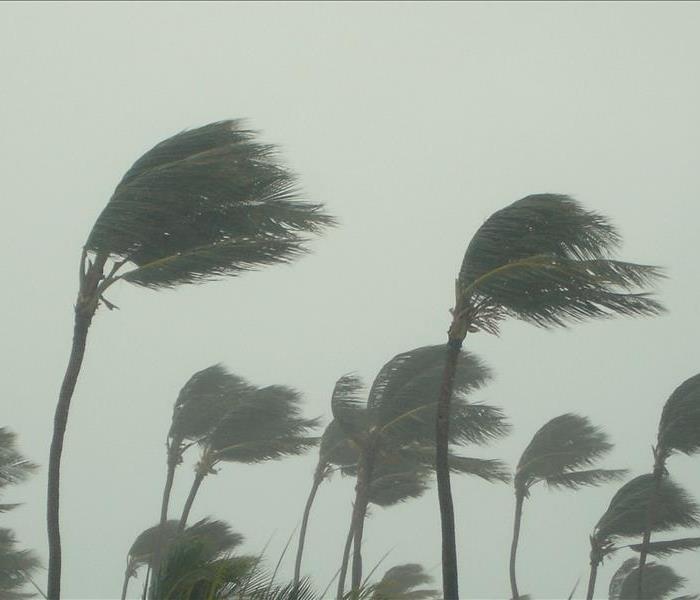Archived Storm Damage Blog Posts
Protecting Your Home from Water Damage in Hawaii
9/7/2022 (Permalink)
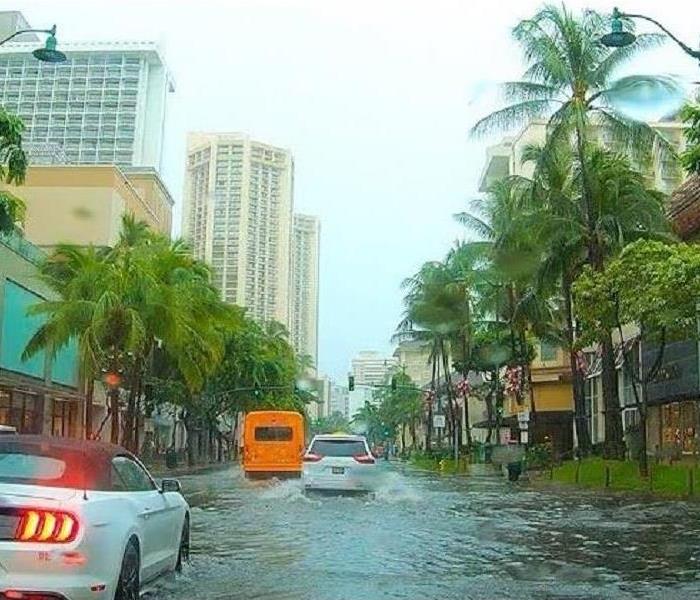 Recent Flood Damage Honolulu HI
Recent Flood Damage Honolulu HI
No one wants to think about the havoc water damage can wreak on a home. Even just an inch or two of water can cause extensive destruction, and insurance coverage or federal aid isn't always guaranteed. That's why it's crucial to take preventive measures seriously.
In Hawaii, the risk of flooding is a constant concern, particularly due to the narrow valleys that can lead to flash floods. The highest risk period in Honolulu typically spans from October through April.
Exterior Protection
Maintain Your Gutters: One of the first lines of defense against water damage is a functioning gutter and downspout system. Regularly clear them of debris to ensure proper water flow away from your roof and home.
Garden Smartly: If you enjoy gardening, consider planting in a way that directs water away from your home. Properly designed gardens not only enhance your property's beauty but also help protect your foundation. Additionally, adding mulch around your home's foundation can aid in absorbing excess water.
Secure Propane and Fuel Tanks: If you have propane or fuel tanks on your property, ensure they are securely anchored to prevent them from washing away during flash floods. Also, consider relocating electrical outlets away from ground level and switch off electricity to flood-prone areas before an impending storm.
Interior Precautions
Foundation Maintenance: Many water issues originate from foundation cracks or waterproofing problems. Regularly inspect and promptly seal any foundation cracks you discover.
Preventing Leaks: Water damage isn't always due to external factors; it can originate from leaky pipes or appliances. Regular utility inspections can help catch small issues before they escalate.
Protect Your Valuables: Store cherished items and important documents off the ground or in a waterproof safe. Remember that while possessions can often be replaced, sentimental items and memories cannot.
Emergency Preparedness: Always keep a copy of your emergency plan stored in a safe and accessible place. Being prepared can make a significant difference in any natural disaster.
When Disaster Strikes
In the unfortunate event of water damage, don't hesitate to call professionals for help. SERVPRO of Central Honolulu is here to assist you with efficient and effective restoration services.
We understand the challenges water damage can bring, and our experienced team is ready to respond promptly, minimizing the impact on your home and life. Protect your investment, and rely on SERVPRO of Central Honolulu for all your water damage restoration needs.
3 Storm Damage Risks to Watch For | SERVPRO® of Central Honolulu
8/18/2022 (Permalink)
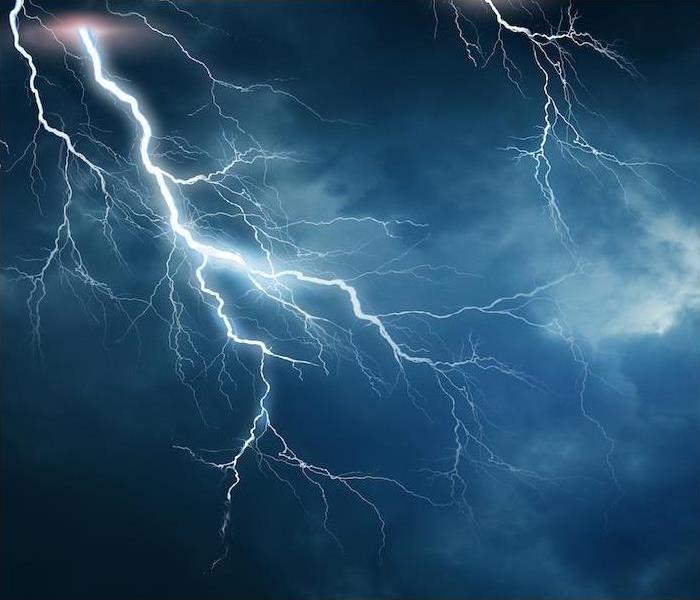 When you suffer storm-related damage to your home or business, make SERVPRO of Central Honolulu your first call.
When you suffer storm-related damage to your home or business, make SERVPRO of Central Honolulu your first call.
When severe weather is in the forecast, it can make even the most experienced homeowner wary. Storms can be very strong and cause damage to your home and property!
In terms of the different kinds of damage, water, wind and impact damages are the most common. All three can cause major damages to your home.
Thankfully, just because a storm is predicted to be strong doesn’t mean that your home will suffer any sort of damage. It all depends on what kind of storm it is, where you live in town and how well your home was constructed.
In Honolulu, we mostly experience heavy rains and tropical storm threats, but we have been known to see the occasional severe thunderstorm as well. It is crucial to understand how to approach each situation in relation to protecting your home.
Wind
Wind from severe storms or tropical weather events can be incredibly strong. Reaching over 100 mph, wind can cause widespread damage to our properties.
When wind blows that quickly, it can uproot trees and overturn cars. Remain indoors during any sort of storm that is producing intense wind.
If you are alerted ahead of time for an incoming storm, take a few moments to prepare your yard. Pull your patio furniture into your garage or under your carport, and keep your landscaping free of any large rocks or dead debris.
Water
Water damage is one of the largest threats to us here in Honolulu. With our warm and moist climate, any standing water or lingering moisture in our homes can be a breeding ground for mold.
Be careful about doing any landscaping close to your home. If you do, angle any structures away from the foundation of your home to prevent water from flowing backward into your basement or lowest level. You can also incorporate a rain garden into your landscaping to help provide a place for the water to collect.
If you have gutters on your home, make sure they are free of any debris and your downspouts are pointing away from your house. Any pooling water on your roof has the potential to leak down your walls.
Impact
When it comes to impact damages, they can be very expensive and widespread. If winds accompanying a thunderstorm or tropical weather event are strong enough, they can uproot trees and throw them into your home or overturn your cars into the side of your house.
Impact damages, which occur when storms throw items into your home or property, making an impact, can be some of the most devastating.
Do your best to address any dead trees or property debris before any incoming storm and remove any yard hazards when you can to reduce your risk of suffering these types of damages.
If you do suffer storm damage, it can be hard on your wallet. In 2021, storm damage cost Americans $145 billion in damages!
At SERVPRO of Central Honolulu, we are here to make sure that the long-term effects of any damages are minimal. We will jump right into action and begin your restoration plan as soon as possible! Call us day or night, and we will be there.
When you suffer storm-related damage to your home or business, it’s important that you know who to call! Contact us today to get your storm damage restoration started faster.
The Importance of Weather Alerts | SERVPRO® of Central Honolulu
7/12/2022 (Permalink)
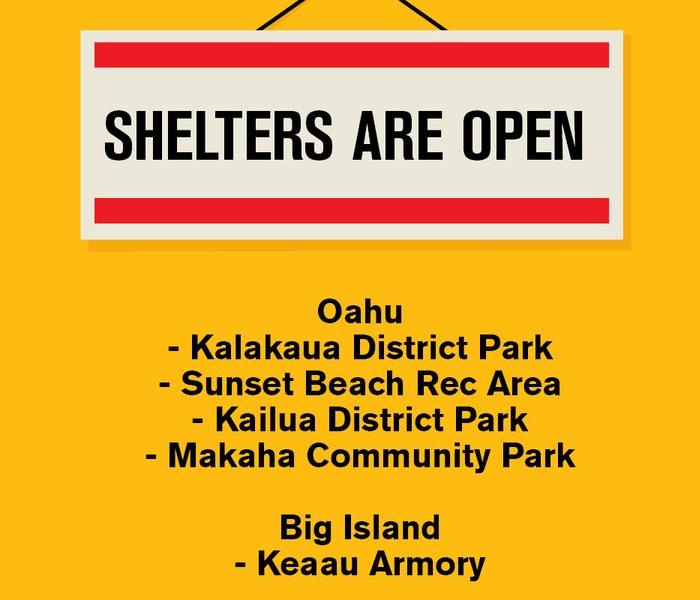 If you suspect any damage to your home from a recent storm, call SERVPRO of Central Honolulu.
If you suspect any damage to your home from a recent storm, call SERVPRO of Central Honolulu.
Severe weather comes in many different forms across the United States. In fact, the United States is so unique with different weather patterns that there are 42 different kinds of weather alerts that correspond to all of the possible scenarios.
When warnings or alerts for those weather systems are issued in Honolulu, it is important that you understand how to interpret them in order to stay safe.
Thankfully, we don’t experience every single weather scenario possible (and we are especially thankful for the lack of blizzard warnings here). But we do need to understand the alerts that affect us here in Hawaii.
<h4and-alerts">Forecasting and Alerts
Have you ever been curious about how an alert is issued in the first place? Forecasting is an educated prediction, so how do forecasters feel confident about issuing alerts based on predictions? They actually use a variety of different models and data points in order to be as accurate as possible when it comes to the severity, length and location of a given weather system.
The National Weather Service is the major organization that oversees the weather forecasting for the entire nation. That’s a lot of responsibility!
In order to keep every forecast and alert as accurate as possible, the NWS is broken down into six regional locations around the country and sub-locations even closer to home. The Pacific Region that oversees our area is actually located right in Honolulu. We are the only state in the country that is under the Pacific Region’s responsibility.
The staff at the Pacific office use satellite data, sensors, and solar and seismic activity meters to create their forecasts. While they understand that weather can sometimes be unpredictable, their goal is to be as precise as possible.
<h4the-difference-watch-vs-warning">Knowing the Difference: Watch vs. Warning
Being an island state, it is imperative that we all understand the difference between watches and warnings. Weather can change in an instant, so it is important to know the distinction between these two alerts.
A lot of our weather threats are water-based, like tropical storms, cyclones, flash flooding or tsunamis. Most of our state is at risk to quickly changing weather in regard to the ocean, so it is important to know how each of these weather situations would impact you and your home.
When a watch is issued, you must begin preparing for the incoming weather with the understanding that it has the potential to turn severe. Update your emergency kit and keep an eye on the sky.
When a warning is issued or replaces a watch, it is time to head for shelter immediately. A warning means that the incoming weather has been proven to produce dangerous qualities.
<h4your-home">Prepping Your Home
The most important focus during severe weather is to keep yourself and your family safe. However, if you have enough time ahead of the storm, you can take a few preventive measures around your home that will help reduce the risk of damage to your house.
Clearing your gutters and securing your outdoor furniture are two easy tasks you can do to help minimize the risk of structural damage and water damage to your home. It is also a great idea to repack your emergency kit and place that in your safe shelter location.
When the threat of severe weather has passed, do an inspection of your home and property, take photos of any damages you find, and call us at SERVPRO® of Central Honolulu if you need help with the cleanup or repair process. We respond to all inquiries quickly, and we will begin your restoration as soon as we can.
The more you understand about Honolulu’s weather, the safer you can keep your family. Taking the time to understand the different alerts and how to respond to them is a great way to stay prepared in advance of the incoming severe weather and hurricane season.
Experienced storm damage to your home or property? Contact us today for a quick response!
How to Create a Storm Safety Plan | SERVPRO® of Central Honolulu
5/19/2022 (Permalink)
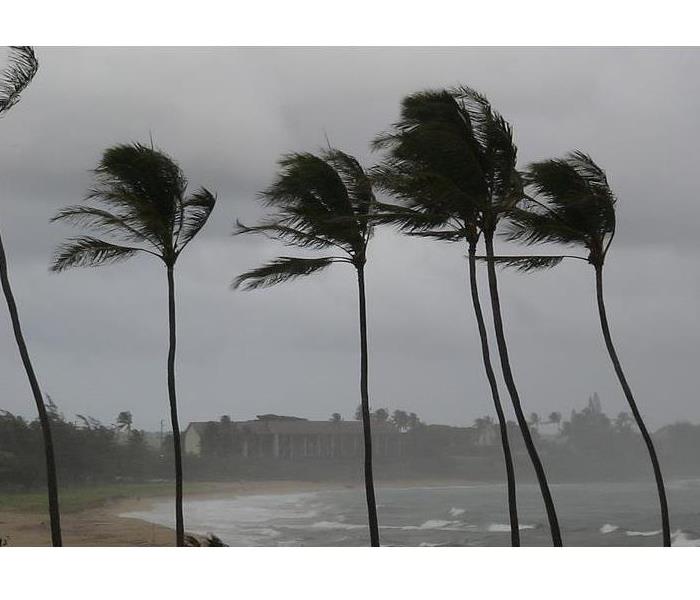 If you discover storm damage to your home or business, reach out to SERVPRO of Central Honolulu right away.
If you discover storm damage to your home or business, reach out to SERVPRO of Central Honolulu right away.
Severe weather can create hazardous circumstances and result in significant damage to houses and infrastructure. Weather-related damages frequently have financial ramifications. The United States spent at least $1 billion on weather-related damages in 2021, demonstrating how costly storm disasters can be.
Here in Honolulu, we are more at risk for water-related natural disasters such as tsunamis, hurricanes and flooding. It is important to know the types of disasters that are more likely to occur in our area to know how to best prepare for incoming storms.
Storms can be dangerous to both your safety and wallet—and while we can’t control the weather, we can learn how to better prepare for storms when they do happen. One way to prepare for bad weather is to have a storm safety plan in place.
Prepare an Emergency KitIn the event of a storm, emergency kits are vital to have on hand. Water, nonperishable food, a first-aid kit, functional flashlights and backup batteries should all be included in your emergency bag. Ensure that your emergency kit is stored in a location that is easily accessible from your shelter.
Create a Communication PlanWhen a storm strikes, having a communication strategy in place for all members of your household or business is critical. In the event of a weather-related emergency, communication plans with emergency phone numbers, marked evacuation routes and shelter information can be useful.
Consider creating a dedicated “safe zone” in your house or office to shelter from bad weather, as well as a check-in system for parties to report when they are safe.
Prepare Your Home, Inside and OutBy taking efforts to prepare your house or company for a storm, you can lessen the risk of avoidable damage. Begin by securing windows and doors and inspecting the exterior of your structure for loose items that could be blown away during the storm.
Next, make sure your roof and gutters are in good functioning order and that there are no leaks. Installing DIY storm shutters to protect against rain and severe winds can also be beneficial.
It is critical to know who to call for assistance in the event that damages occur. SERVPRO of Central Honolulu has your back with a dependable team of professional restoration technicians. We’re available 24 hours a day, seven days a week to restore your home to “Like it never even happened.”
Finally, take time to review your storm safety plan and how it worked for your house or business. Gather any necessary supplies, revise your communication plans and be ready for the next storm.
If you discover storm damage to your home or business, you can count on SERVPRO to handle the restoration. We’re here 24⁄7 to spring into action—get in touch with us today.
Benefits In Choosing SERVPRO for Large Loss Events
4/7/2022 (Permalink)
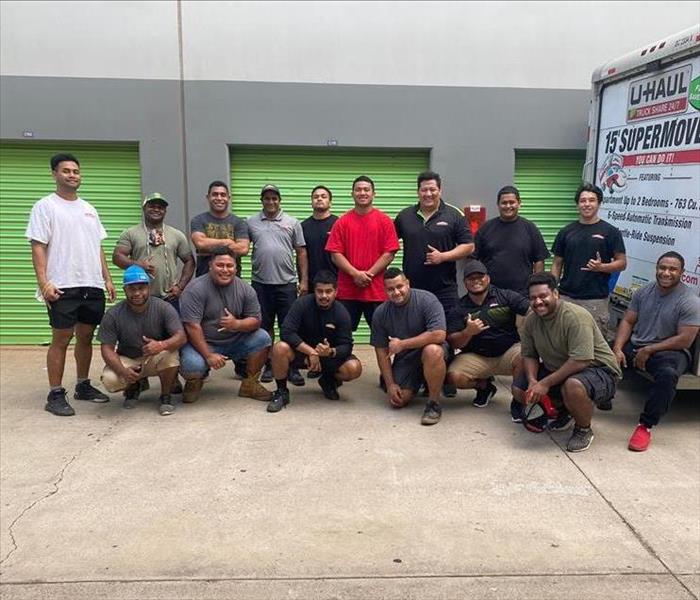 Mit Team on Site
Mit Team on Site
SERVPRO of Central Honolulu meets Commercial Large Loss Standards.
Available 24/7
Storms and other disasters can strike at any time of the day or night, so we are ready to help as we’re needed
Commercial Large Loss Division
Our Disaster Recovery Teams are composed of elite technicians who have the training and resources to handle large-loss events for industries that have included hospitals, universities, and government facilities.
Strategically Located
We have more trained and certified technicians than any of our competitors at more than 1,900 locations in the United States and Canada. This gives us a larger network of professionals, supplies and equipment to get the job done, regardless of size.
Personal Attention
Each large loss project is managed by a project manager from your local SERVPRO location. They’re backed by the SERVPRO headquarters operations team to help you have the smoothest restoration experience possible
Easier Insurance Claims Process
SERVPRO will help you navigate the insurance claims process and coordinate the necessary paperwork for a quicker, easier experience.
Preparing Before an Emergency Strikes
Since you never know when an emergency will come, preparing ahead of time can save you a lot of stress if it does happen. You can sign up for SERVPRO’s Emergency Ready Profile for your business or commercial property. You’ll work with your local SERVPRO professional to come up with a plan of action in the event of an emergency or large-loss event. You can also ask about our other related services including the Priority Response Service, pre-staged power services, tarping, sandbagging and more.
How Important Is Flood Preparation When You Live on an Island?
4/5/2022 (Permalink)
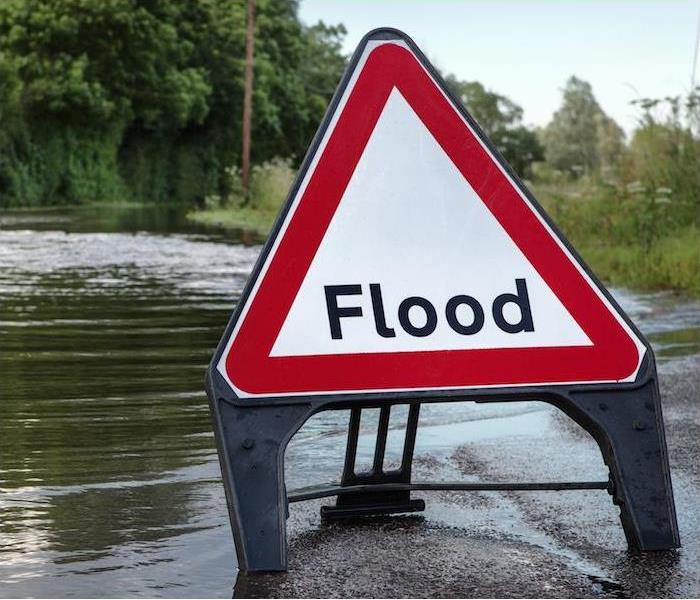 Floods on Island
Floods on Island
When you’re living on an island, it’s difficult to predict when a tidal wave could occur, impacting your home and livelihood. Perhaps, you have recently suffered some sort of flooding in your home.
It’s easy to pass off a little water, considering flooding is the most common natural disaster in the U.S. and its territories. However, you may not have know it claims more lives per year than hurricanes, tornadoes or lighting. Not to mention, flooding can impact anywhere from one home to an entire island.
There are actually several similarities among types of flooding and the causes behind them. The categories of flooding can be broken down into three types: flash floods, river floods and coastal floods.
3 Types of Natural FloodingFlash floods occur when heavy rain passes or sits over an area and hinders the ground’s ability to contain all the moisture. Excess water runs off and takes garbage cans, cars and more with it.
River floods can happen when there’s too much water for a river’s banks to hold, the water spills over the sides and causes destruction.
Coastal floods happen in areas next to large bodies of water, such as islands. When a storm comes through, it can cause ocean or gulf levels to rise to flood levels.
4 Typical Reasons Behind Natural FloodingHeavy rainfall. Heavy storms that sit and rest over an area for a long time can cause flash floods or river flooding. Urban areas are more at risk for rain floods, because there’s a lack of soil to soak up all the water.
Oceanic activity. Storm surges, hurricanes and rising tides can cause water levels to rise in waves, which can wreak havoc in coastal communities, such as Honolulu.
Dams and levees failing. The most notable example of this in recent history would be the disastrous levee breaks during 2005’s Hurricane Katrina. Levees and dams fail when cracks occur or excess pressure overtakes the dam’s ability to contain the surge of water behind it.
Snowmelts and ice dams. In other states where heavy snow and prolonged freezing temperatures are common, snow and ice can build up over several months. When they start to melt, it can cause flowing waters, which damage nearby communities. Ice dams or ice jams occurs when ice traveling downstream blocks the path, causing the banks to overflow.
Whether you have experienced coastal flooding or a flash flood, SERVPRO has the resources to assist your home or business in the reconstruction process. Contact us anytime when flooding or water damage makes a mess in your life.
Spring Brings Weather Hazards to Hawaii | SERVPRO® of Central Honolulu
3/4/2022 (Permalink)
The United States is one of the world’s biggest countries, behind only Russia and Canada in terms of total land area (though China is larger if all outlying US territories are excluded).
However, because the country contains such a large and diverse area under one roof, seasonal weather in the country is not uniform—different parts of the country experience their own varying degrees of weather threats.
Let’s take a look at the diversity of weather events each area in the country might anticipate, as well as what we should be aware of here in Hawaii for when spring arrives here and around the country.
During the spring months in the Pacific Northwest, heavy rain can cause floods and property damage. Snow will continue to fall at higher altitudes far into the spring season, and the melting and runoff connected with it will cause its own difficulties
The Upper Midwest and Northeast have the longest winters due to the frigid weather that lasts all year. From Maine to the Dakotas, extreme cold and the possibility of snowstorms and blizzards are expected until late spring or early summer, when temperatures begin to rise.
The southern West Coast will be on the lookout for extreme heat waves that could endanger lives and property, while total annual rainfall in the South Pacific, including here in Hawaii, sometimes exceeds 300 inches in some regions, and as little as 20 inches in others. Also, as consequence of tectonic activity, Hawaii will also have to be on the lookout for potential tsunamis during this time.
Windstorms, derechos and the possibility of wildfires threaten havoc throughout the heartland, from Iowa to Texas. Wildfires may spread swiftly when winds are strong and the weather is dry. As you may be aware, a portion of this area is known as Tornado Alley, due to the high frequency of tornadoes and is particularly active as cold and warm air collide with the spring season.
Finally, extreme weather in the Southeast is a possibility, ranging from tornadoes and severe thunderstorms in the landlocked regions to hazardous rip currents on the coast and even the threat of spring hurricanes.
Residents of the United States, regardless of where they live, face the dangers of extreme weather. While yours may differ from that of a friend or family a few states away, it’s always a good idea to be prepared.
If extreme weather leaves you with damage from water, fire or other elements, help is a click away. Contact SERVPRO for fast, expert recovery.
Summer Storm Awareness
1/27/2022 (Permalink)
Summer is in full swing, and it brings with it all the things about summer we love. Many of us have vacations we’ve been waiting on seemingly forever, higher temperatures practically beg us to hit the pool or beach, and days are long and full of sunshine—well, most of the time, that is.
If it sometimes seems as though summer months lend themselves to more thunderstorms, that would be because it’s totally true. Atmospheric conditions, especially in certain parts of the country, are more amenable to creating them, given the presence of the two things most necessary for storms to emerge, namely moisture and warm air.
Here in Hawaii, our storms are more rare, though, but Kona storms do come and cause inconvenience. Last year, we received our first tornado warnings in over a decade.
Though storms may be a common part of summer, that doesn’t mean they should be treated lightly. Always pay attention to storm alerts, and consider cancelling outdoor events if heavy storms are predicted.
Pay attention to local weather forecasts, and get yourself an NOAA Weather radio to continue to receive alerts if power is lost.
Flooding is always possible and rarely predictable, but if it’s deemed likely, you should plan to stay at home and off the roads. Extreme storms can break tree branches and throw backyard objects and trash cans around. Keep trees trimmed and move garbage cans and patio furniture to safe locations.
Dozens of people die every year in storm-related incidents, so caution is always the best choice. Taking storms for granted is a mistake.
Stay indoors when lightning is present. It’s not safe to go back outside until you haven’t heard thunder for a full half hour, because lightning can strike up to 10 miles from the nearest rain.
Your mother was right—you should stay away from windows and avoid bathing or showering during a storm.
In cases of tornadoes or extreme thunderstorms, make sure you have an emergency kit prepared, and that you know the evacuation route for your area.
If flooding occurs, stay on high ground and avoid flood waters if at all possible. Do not attempt to drive or walk through moving water, as it can easily knock you down or even carry your car away. It can also conceal roads that have been totally washed away.
There are any number of dangers that can come into play in a thunderstorm, and it’s always best to be cautious and put things on hold until storms safely pass. If storms cause damage to your home or business, SERVPRO is ready to make things right again.
Preparing for Tropical Storms on Oahu HI
1/19/2022 (Permalink)
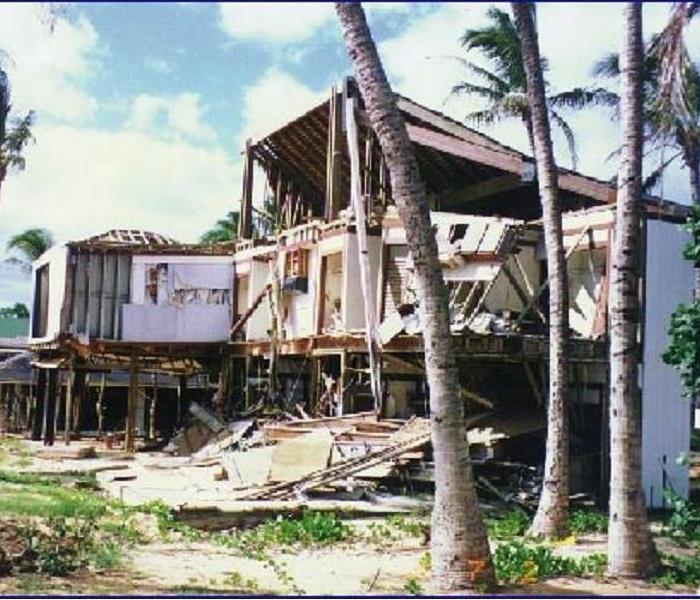 Tropical Storm on Oahu
Tropical Storm on Oahu
Preparing for Tropical Storms on Oahu HI:
On Oahu, a good practice is to be prepared for Tropical Storms and heavy rains in Hawaii. We do not know what is in store for the next several months, or next year for that matter. Below are some best practices for Preparing for a Tropical Weather in Hawaii. Please, start thinking about and doing these things if you haven’t already. They can make a difference in both the safety of you and your family, and the damage to your home.
- Get Hurricane AND Flood Insurance Coverage for Your Home Before a storm is on its Way
Many people in Hawaii have hurricane insurance for their homes. It is strongly recommended. But did you know that hurricane insurance is only WIND insurance. Whether or not you are in a flood zone requiring mandatory flood insurance, it is also a good idea to also have FLOOD insurance. This can help protect you from the water damage caused by a hurricane. Water damage can be immense in a hurricane, but also in other events such a tropical storms and tsunamis. BOTH hurricane and flood insurance are important items to consider when preparing for a hurricane in Hawaii. Keep your insurance contact in a place where you can easily find it.
- Declutter Your Yard & Garage, Trim Your Trees
During a recent storm threat, we and many of our friends and neighbors worked in our yards for a day or more preparing for the storm. It is recommended to remove lawn furniture, potted plants, decor, patio umbrellas, etc. that may become projectiles which break and fly through your windows. These can harm both people and property. You are advised to bring these items inside where they won’t cause harm. But do you have room for all these items? Consider getting rid of unused items and old junk that may be in your yard before hurricane season or now, if you haven’t already. At the same time, declutter your shed, garage, or carport, so that you have room to put all these items when preparing for a storm in Hawaii. Apparently, many people had this idea, but too late, as the lines at the dumps on Oahu were reportedly very long, the day after Hurricane Lane’s demise.
- Figure Out a Water Storage Plan When Preparing for a Storm in Hawaii
Don’t run out and buy cases of bottled water (unless that is your only alternative). It is not only expensive, but the bottles are harmful to the environment. Plan ahead and use water from the tap. Hawaii water is safe to drink from the tap and is important in preparing for a storm in Hawaii. In this recent storm, I heard several creative ideas on how to store tap water. A few of our neighbors purchased a large (100 gallon) bladder that can be filled from the tap and stored in the bathtub. It comes complete with a pump. We don’t have a bathtub to fill in our home, but purchased some food-safe garbage cans which held 32 gallons each and were filled from the tap. One fit perfectly in our shower. Stored water is necessary for both drinking and cooking, and for hygiene, bathing, and flushing toilets, if the water supply is compromised. Make sure you also have liquid bleach available and add a drop or two to your water, as necessary.
- Pack a Storm/Emergency “Go Bag”
In the event you must evacuate in preparing for a Storm in Hawaii, you should have a “Go Bag” packed and ready. Hawaii Emergency Management Agency has prepared a suggested checklist for this, which includes items such as flashlights, batteries, food, water, first aid supplies, important documents, hygiene supplies, etc. You should find the lightest weight (but sturdy) bag possible, and also, consider rolling storage for these items, since you will need to carry them, and food and water can be heavy. A waterproof bag would not be a bad idea either.
- Prepare for high rising water.
In a Tropical Storm the water will rise. Depending on how close you are to the ocean, streams, or mountains the water must go somewhere. Be prepared to allow the water to travel towards the ocean and unfortunate your home may be in the way. As the storm increases watch for water build up areas around your home and on the roof, freeing up anything that stops the water from flowing. Sandbags can be heavy and hard to move around. There are several other alternatives to use in a pinch, https://worstroom.com/sandbag-alternatives/ most of these eco friendly bags fill with water and will help guide the water to where you want it to go VS creating a dam.
Hurricane Season Is Upon Us... How To Prepare the Inside Of Your Home
7/29/2021 (Permalink)
 Take time to prepare for the next hurricane now
Take time to prepare for the next hurricane now
The beautiful islands of the Pacific don't often see damage from hurricanes, but it is still possible. Hurricane Iniki left over 6,000 homes damaged with displaced families. This devastation left a real impact on Hawaii families. Luckily, we have the time now to prepare before the next storm. Here are some recommendations from SERVPRO of Central Honolulu and FEMA.
How to Prepare The Inside Of Your Home
- Review your insurance policy
- By understanding your coverage before the storm, you can save yourself some headache and anxiety during the heat of the storm allowing you to focus on what matters most. This can also provide help after the storm, if and when you need to file a claim.
- Document your homes contents now
- Take a few moments to take detailed photographs of your valuable possessions. Its also a good idea to walk through your home in a video to take note of the majority of your home. Photos and videos can be of great help so snap away!
- Protect windows and glass doors
- Reinforce windows with storm shutters to prevent windows from breaking under the high winds and possible debris. Another option is to add shatter-resistant film to windows.
- Build a Safe Room
- Even if your home is up to code, you may find comfort in adding a safe room for extra protection. A safe room is built to withstand higher pressures that can come with severe storms and is designed to protect you and your family.
Please read more about these tips from FEMA at this link.
Should you need help after a storm, contact your locally owned and operated SERVPRO of Central Honolulu as your trusted mitigation and restoration experts. Call us anytime at 808-235-8105.
Hurricane Season Is Upon Us... How To Prepare the Outside Of Your Home
7/29/2021 (Permalink)
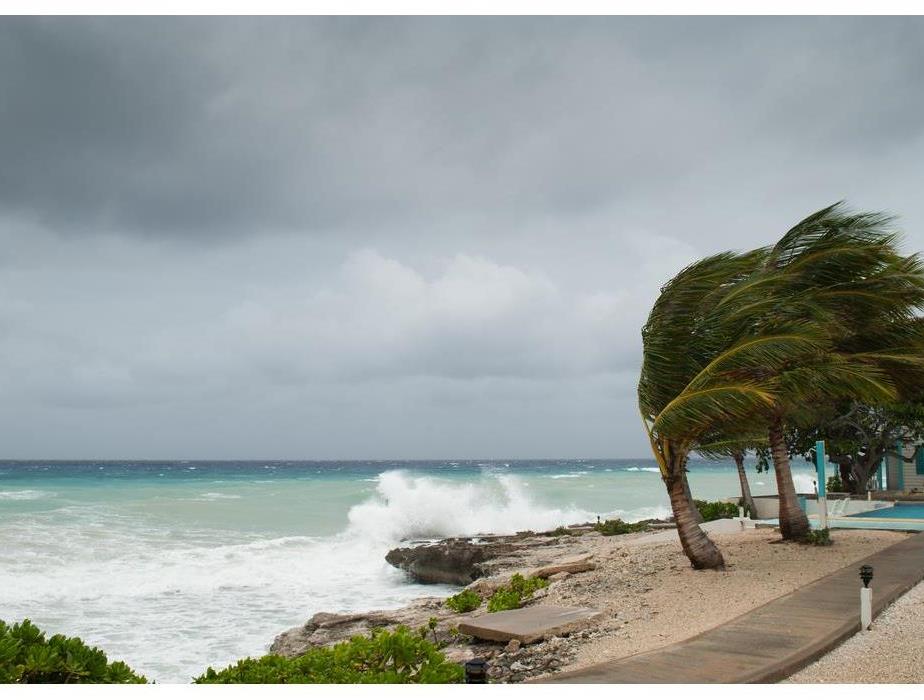 Prepare for storms now to prevent damage later
Prepare for storms now to prevent damage later
The beautiful islands of the Pacific don't often see damage from hurricanes, but it is still possible. Hurricane Iniki left over 6,000 homes damaged with displaced families. This devastation left a real impact on Hawaii families. Luckily, we have the time now to prepare before the next storm. Here are some recommendations from SERVPRO of Central Honolulu and FEMA.
How to Prepare The Outside Of Your Home
- Fortify your roof
- Inspect your roof at the start of each hurricane season. Repair any shingles that are loose.
- When installing a new roof, consider opting for impact-resistant shingles and hurricane clips.
- Trim or remove unhealthy trees
- Dead, damaged and rotting trees pose a risk to homes in high winds. Maintain these trees on a regular basis to prevent damage.
- Seal cracks and gaps
- Make sure that water can't easily find ways into your home. Secure cracks around doors and windows with caulking or weather stripping
- Anchor any outdoor fuel tanks
- If you have any outdoor tanks, like propane or other heating sources, make sure they are secured to prevent then from turning or sliding
Please read more about these tips from FEMA at this link.
Should you need help after a storm, contact your locally owned and operated SERVPRO of Central Honolulu as your trusted mitigation and restoration experts. Call us anytime at 808-235-8105.
When Heavy Rains Near the Mountains Can Cause a Flood of Mud
7/1/2021 (Permalink)
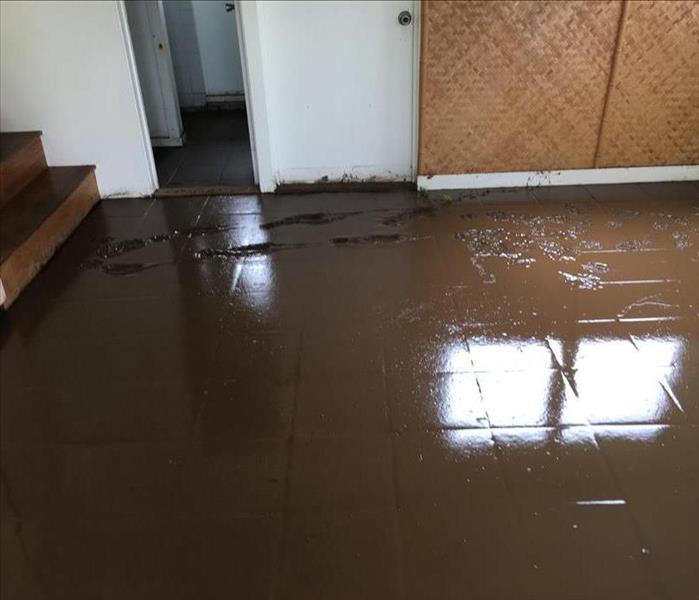 Don't let a heavy rain storm get you stuck in the mud. Call SERVPRO of Central Honolulu!
Don't let a heavy rain storm get you stuck in the mud. Call SERVPRO of Central Honolulu!
In Honolulu we see rain every day. It's usually just a quick and light sprinkle to freshen the plants on your lanai. Occasionally we will find a heavier and more powerful rain come through the islands that can come with a big storm or suddenly after a sunny day.
One of these rains filled this customer’s home with all the mud and water from the mountain above in just a few hours. By the time the homeowners realized the rains picking up, it was too late to place sandbags around the perimeter of the home to protect from incoming water. As a result the water rushed into the home and brought inches of standing mud along with it.
SERVPRO of Central Honolulu was called to help this family restore their home back to its original glory. After removing the mud and moisture, the professionals at SERVPRO of Central Honolulu finished the job with a thorough cleaning.
If your property experiences storm damage, call SERVPRO of Central Honolulu to get started on your restoration job!
Heavy Rains Don’t Have to Lead to Home Rain Damage l SERVPRO® of Central Honolulu
6/29/2021 (Permalink)
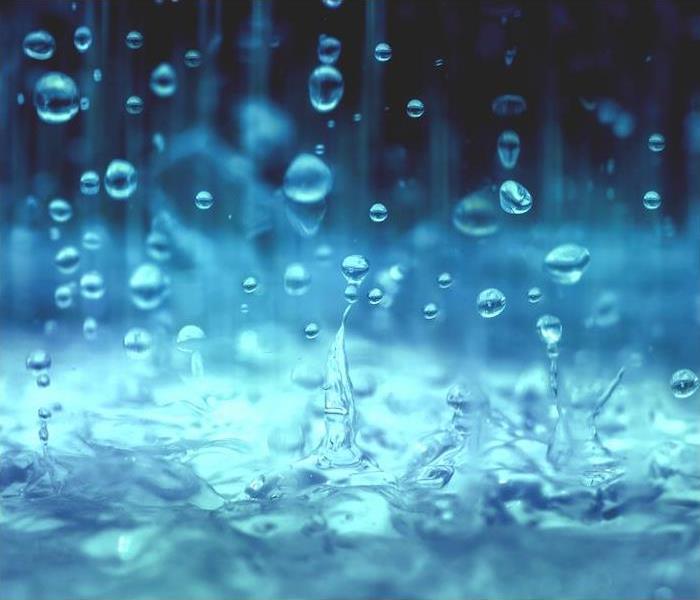 If you need help dealing with any damage caused by water, contact SERVPRO of Central Honolulu today.
If you need help dealing with any damage caused by water, contact SERVPRO of Central Honolulu today.
What are the top causes of home water damage? Would you put rain on your list?
When asked how water damage happens, homeowners cite various problems like severe floods. But there are other ways for water to damage your property, too.
You may also think about problems like sewer backups. Problems with plumbing in the kitchen and bathroom can also do their share of water damage. Those issues are well-known, and homeowners usually know what to do to prevent them.
But some types of water damage actually worsen over time. That includes the damage that heavy rains bring. Because rain is a common fixture in most forecasts, we don’t think much about it. But if your home has any maintenance issues, rain can cause damage that will get progressively worse.
Avoid Heavy Rain Damage This Season
The projects on this “to-do” list can help you ensure your home is safer from water damage. If you haven’t already considered them, now is a great time to explore these options and make changes to your home.
Correct any yard drainage issues. Knowing how your yard drains is vital to protecting your home. If you notice that your yard is draining toward your home, then you might want to get in touch with a landscaping expert to look for ways to protect your yard.
Landscape with native plants. If you do a little homework, the flowers and shrubs you use to help you landscape your home and add curb appeal can also become an added layer of protection. Native plants can help.
Consider sealing your roof. Experts estimate that almost 95% of damage is caused by water finding its way through gaps in your shingles, which can be prevented with this step.
If you need help dealing with damage caused by water, fire or any other issue, we’re here to help you restore your home. We have crews who are available 24⁄7 in the event of an emergency. Contact us at any time to learn more about us and how we can help you restore your home to its original state.
SERVPRO Trucks and Technicians are Standing By to Remediate Your Flooded Property
6/25/2021 (Permalink)
 Call SERVPRO of Central Honolulu if you face damages after a storm.
Call SERVPRO of Central Honolulu if you face damages after a storm.
During the period from midsummer through December, residents prepare for the possibility of flood damage in Kaneohe due to severe storms and even hurricane activity. High winds, torrential rains, and storm surge cause rain and salt water to flood into the crawl spaces and lower levels of homes. We count as our core mission helping our community recover from the effects of these violent storms, using highly trained water removal and damage remediation technicians and powerful, professional grade restoration equipment.
SERVPRO is prepared for a speedy response when flood damage threatens your home. As we answer your call, we will schedule an appointment to assess the damage to your premises and to make a plan to both remove the flood waters and then dry out your house and possessions.
After most of the water has been extracted, SERVPRO technicians will begin measuring moisture content and establishing drying goals. High-efficiency air movers and dehumidifiers rapidly reduce the moisture content of walls, floors, ceilings, and other structural components. Periodically our workers reassess the moisture levels to ensure drying is progressing as expected. Some building materials will be deteriorated beyond repair because of the saturation or the force of the flooding, but our focus is restoration over demolition.
We will work with your insurance carrier throughout the restoration process. We will also provide payment plans for self pay customers. SERVPRO of Central Honolulu follows a precise inventory protocol if we move boxes, clothing, and other items from the flood damaged areas of your home. Typically we find a protected area within your property to store your belongings as we help you review what contents can be restored and what may need to be discarded.
SERVPRO of Central Honolulu has the tools and the personnel to assist when storm activity results in flood damage. Give us a call at 808-235-5015 so we can get started on your project!
It's never too early to prepare for the next storm
5/26/2021 (Permalink)
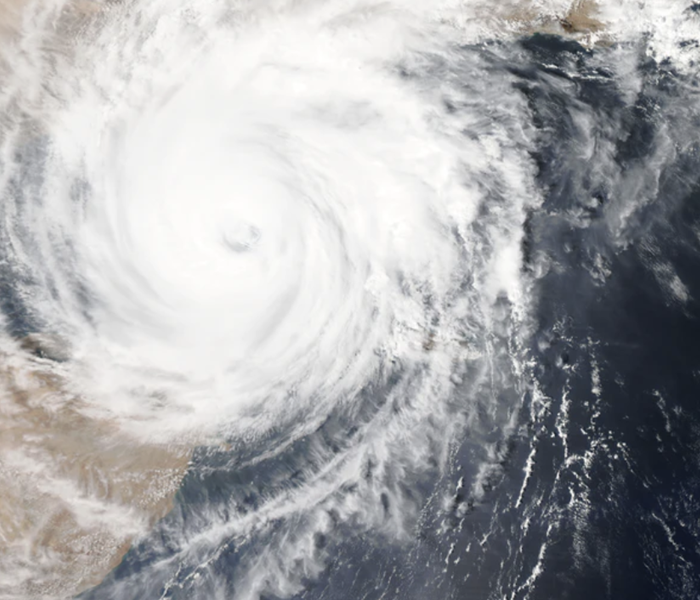 Prepare for hurricane season early!
Prepare for hurricane season early!
When a storm is headed to the islands all of your neighbors will be running to local grocers and hardware stores to prepare. Now is a great time to prepare before storm season while time and resources are ample.
Unsure where to start? Here are a few tips
- Hurricane clips
- Many roofs in Hawaii are not prepared for a heavy wind storm. Hurricane clips connect your roof to wall structure and are designed to withstand the upward pressure that a hurricane can put on your roof. Consider installing them on your home this summer.
- Yard maintenance
- By keeping up with yard work now, you can save yourself a hassle later. You can protect your home by getting rid of dried out and dead flora in your area.
- Secure windows and other glass
- Clearly, windows are a vulnerable part of your home. They need to be secured before a storm and this can take some time and effort. Do it early before the storm is on the way.
Don't Let Flooding In Your Hawaii Kai Business Come To A Halt Call SERVPRO!
10/8/2019 (Permalink)
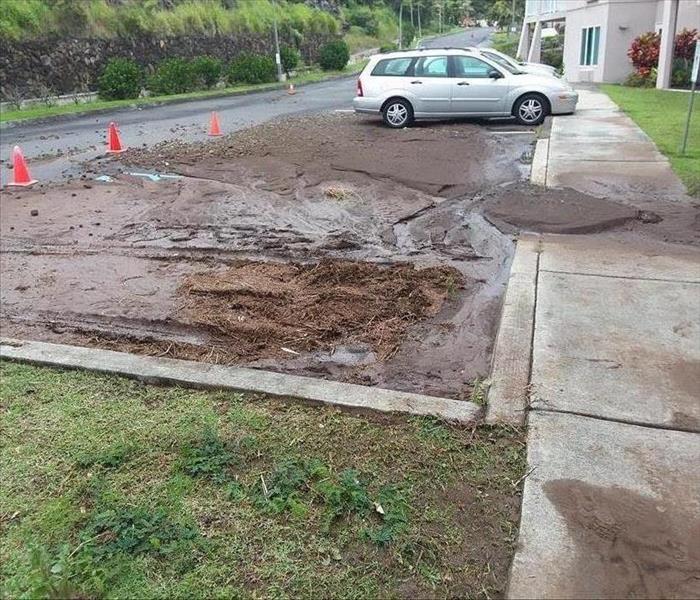 Storm damage have many costs and affects on businesses. Rely on SERVPRO of Central Honolulu to restore your Business
Storm damage have many costs and affects on businesses. Rely on SERVPRO of Central Honolulu to restore your Business
Is Your Hawaii Kai Business Threatened By Rain or Storm?
The islands of Hawaii receive nearly 70 inches of rain a year. With an annual hurricane season, rain and storm damage is always a threat to homes and businesses across Hawaii. There are many ways water from a storm can affect your business.
How can floods affect your home or business?
- Health and safety risks.
Water damage from flooding produces a variety of health and safety risks when water is not immediately and properly cleaned up, including: - Structural damage
- Electrical damage and risks
- Sharp glasses and metals
- Sanitary hazards and diseases from standing water
- Contaminated drinking water
- Defunct drainage and sewage systems
- Cut off communications
- Road and bridge destruction
- Landslides
- Damaged crops
- And so much more…
- Loss of Life.
The most devastating and heart aching after effect of flood damage can have on you or your business is loss of life. Flash floods are the number one weather-related killer in the U.S. - Emotional Hardship.
Flood victims can experience difficulty coping with their situation. A few symptoms those affected may experience are anxiety, depression, fear, anger, frustration, sadness, and grief. At SERVPRO we are understanding of the stress of being affected by flood and storm damage. Our team works tirelessly to ensure the restoration of your business is as fast as possible, so may have peace of mind. - Property Damage.
Ninety percent of damage throughout the U.S. is caused by water damage due to flood. Businesses, vehicles, belongings, equipment… Nothing is immune. Just a few inches of water can cause major damage to your business and it contents. - Economic Loss.
Not all insurance companies and policies cover water damage resulting from flooding, which can put a huge strain on flood damage victims financially. Billions of dollars worth of water damage throughout the year affect those by whom insurance companies will not cover. Protect Your business by verifying your current level of coverage today.
If you have been hit by a storm call SERVPRO at (808)744-2730. We specialize in restoration and reconstruction services for fire damage, mold, and storms. Call today for an inspection.
Does Your Insurance Truly Cover All Storm Damage For Your Honolulu Properties?
9/11/2019 (Permalink)
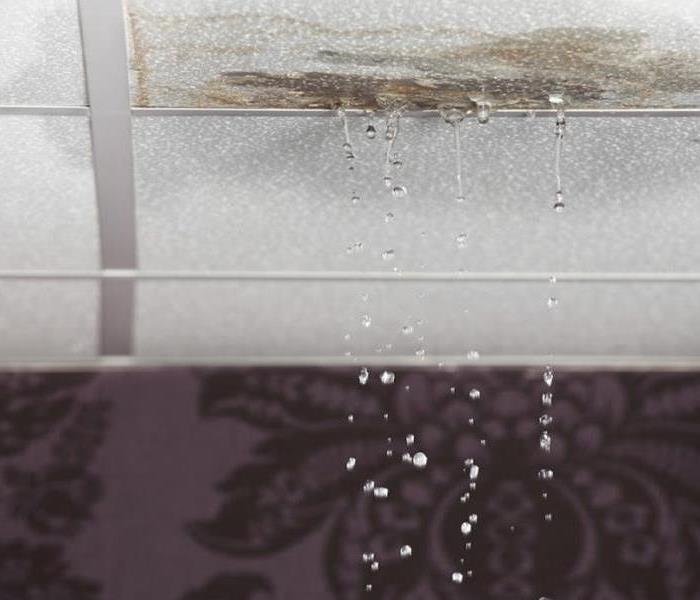 Seemingly small leaks in your ceiling will lead to much larger damages that your insurance will not cover.
Seemingly small leaks in your ceiling will lead to much larger damages that your insurance will not cover.
Make Sure You are Aware of What Coverage Your Insurance Provides
Flooding is common throughout the state of Hawaii. Our rainy season is November to March, taking up almost half a year. Flooding and storm damage is particularly common for local Honolulu homes and businesses. Many Hawaii residents, and business owners find themselves refusing to assess “minor damages” due to financial hardships, which proves to be counterproductive when seeking the most cost efficient way of keeping your home safe, and up-kept throughout the year. To ensure your property is receiving the best care as well as protecting your wallet if disaster strikes follow our SERVPRO recommended steps.
Check What Your Insurance Does NOT Cover With Flooding Damage
Most insurance companies do not cover flooding damage when the water runs into a home from outside. This means if any rushing or flooding water outside were to enter your home through a door, window, or crack the insurance may not cover the damages. Insurance companies do NOT cover water damage if the water enters over the threshold of your home, meaning if the water comes in through your front door damages will not be covered. Call and check with your insurance company to inquire what damages they will cover. In the case, your insurance will not cover these damages take comfort in knowing there are steps you can take to prevent your home from suffering from flood damages. Have your home prepared with sandbags, and a sump pump to prevent water from entering your home. Also, be sure to keep on maintenance in your home to prevent possible situations your insurance won’t cover.
Do NOT Overlook a “Small” Leak
Do not look past a small leak coming from your ceiling. Keep up the maintenance of your property throughout the year. Insurance companies will decline to pay for storm damages if your property has had ongoing issues you did not take care of that cause damage to your home or business.
Check with your property and contact your insurance company to make certain you are prepared and aware of what needs to be done if your property is in danger of flooding.
If you have been hit by a storm call SERVPRO at (808)744-2730. We specialize in restoration and reconstruction services for fire damage, mold, and storms. Call today for an inspection.
Family Preparation Steps For Storm Damage in Your Makiki Home
9/11/2019 (Permalink)
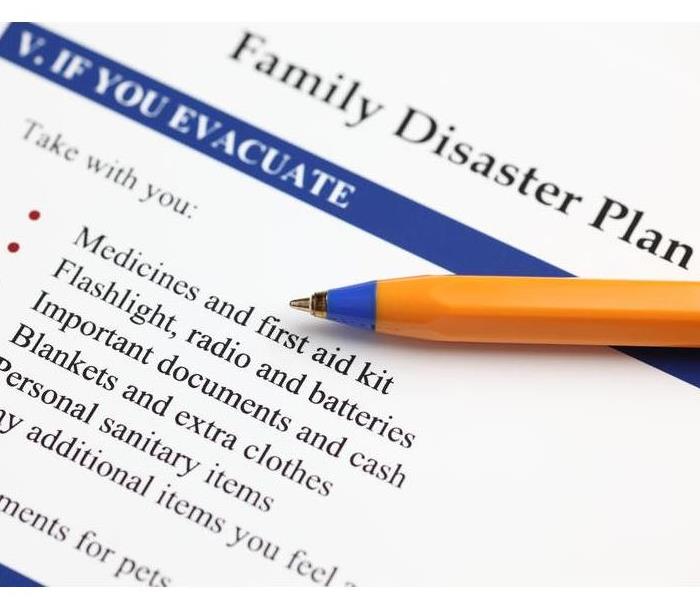 Talk with you family and create a plan for your family if a storm were to arise.
Talk with you family and create a plan for your family if a storm were to arise.
Preparing for a Storm: Part 1
SERVPRO of Central Honolulu is timely and will immediately will dispatch a team to your storm damaged Makiki home. Our team of experts will arrive to your home soon, but your health and safety are our main priorities. While you wait for help to arrive, follow these tips to keep you protected while facilitating a more rapid recovery:
Communicate Preparation
- Discuss preparedness with your family
- Identify an out-of-state contact in the case you are separated.
- Teach children how and when to call 911
- Have emergency contact numbers near the phones in your home
- Teach small children how to use a cell phone
Evacuation
- Determine two escape routes from each room in your home
- Pick three places to meet -
- One right outside your home in case of a sudden emergency
- One location in your neighborhood if your property isn't safe
- A regional meeting place if you can't return home for example a local store or coffee shop
If you have been hit by a storm call SERVPRO at (808)744-2730. We specialize in restoration and reconstruction services for fire damage, mold, and storms. Call today for an inspection.
Home Preparation Steps For Storm Damage in Your Makiki Home
9/11/2019 (Permalink)
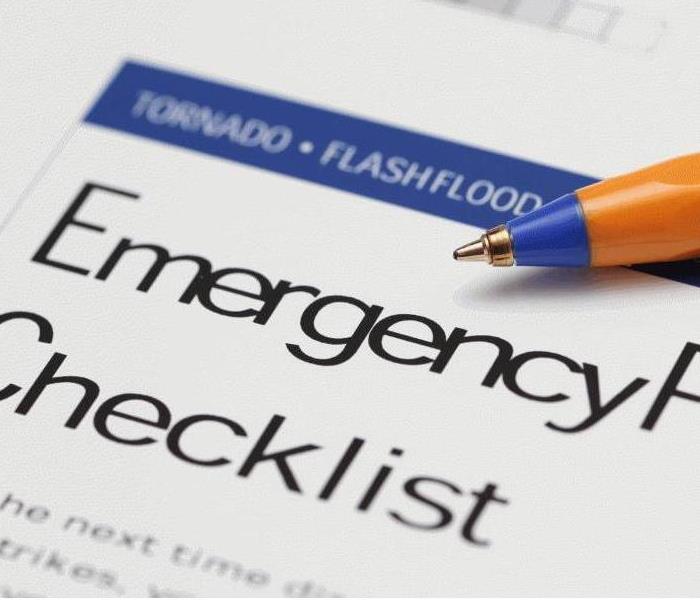 Planning for disaster is worth it. Make a plan with your family, prepare today!
Planning for disaster is worth it. Make a plan with your family, prepare today!
Preparing for a Storm: Part 2
MAKING A PLAN
Water
- Make sure to store at least one gallon of water per person per day and store enough water to last two weeks. If you have enough water, you can live on half of your normal food intake.
- You should store more water if you:
- Live in a hot environment
- Have children
- Are nursing
- Are ill
- Rotate your water supply every six months
- Other sources of water in your home: water heater, ice cubes, pipes and toilet tank (not the bowl)
Food
Food can be rationed. Store at least a three to five day supply of non-perishable food in a dry place that is 70 degrees or lower.
Select foods that require little or no preparation, water, or refrigeration. Select foods that are high in calories, nutritious, compact and lightweight. Choose foods your family will eat.
Pets
Pets are an important member of your family. Plan for them as well. Remember that emergency shelters typically do not allow animals. Only service animals are allowed in shelters.
But you should know safe places to keep your pets if you have to evacuate with them. Where are hotels and motels outside of your area that accept pets? What friends or family members could keep them for you? Which boarding facilities, veterinarians or shelters could be used?
Utilities
Your water heater can be a critical source of water in an emergency, but only if it’s still standing. Go to your home improvement store and buy metal straps to secure the water heater to nearby studs.
A falling water heater can break gas lines and water lines or spill your water.
Gas
If you have natural gas coming into your home, it’s easy to turn off. However, only qualified people should turn gas back on.
When you should shut off your gas meter if:
- You smell natural gas
- You hear gas leaking
- There is a fire (unless shutting off the gas would jeopardize your safety)
If you need to shut off the gas, use a wrench to turn the valve a quarter turn in either direction. Take some time to become familiar with which utilities enter your home and where they can be shut off. As you practice emergency plans, locate and map the gas, water and electricity mains. During family drills, go through the movements, but do not practice shutting off gas lines.
If you have been hit by a storm call SERVPRO at (808)744-2730. We specialize in restoration and reconstruction services for fire damage, mold, and storms. Call today for an inspection.
Three Things You Can Do Today to Avoid Storm Damage in Your Home
7/18/2019 (Permalink)
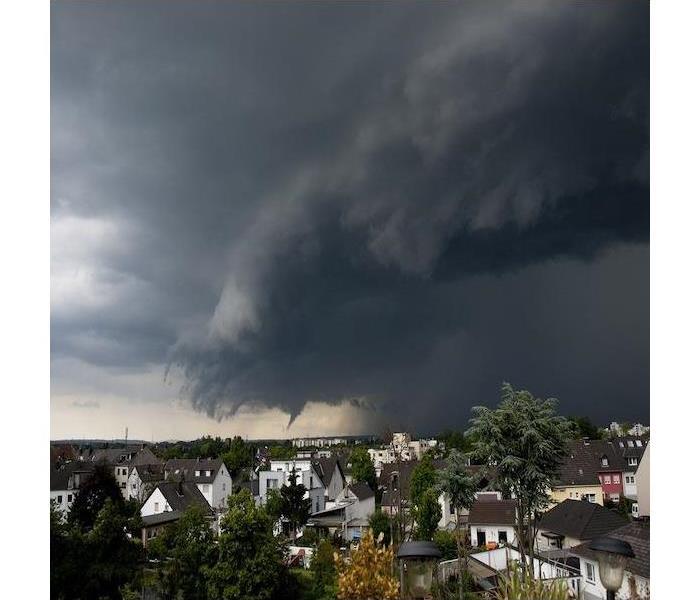 Storm
Storm
- Make sure your yard and balcony are well-maintained!
If you secure and store items that could be blown around in a storm, they will not do damage to your house. Strong winds are able to pick up even the larger items of outdoor furniture and trampolines, which will cause great damage to property. Identify the items you may need to secure or store, and put them away as soon as you hear of strong wind or severe storm in a forecast. If you are on vacation, consider securing all of your items before you leave.
- Make sure gutters, down pipes and drains, are cleaned regularly.
Keeping gutters and down pipes clear of blockages avoids the common problem of water overflowing under the eaves into the roof. Leaves need to be cleared from the valleys of the roof, or else they will make their way into the gutters during rainfall. Keep the drains in your property clear to help water from the surface move away and prevent it from pooling and spilling into your house. Be sure to remove any pots or plants that are being used to hide drainage grates if heavy rain is expected. Always park away from valleys and drains in this type of weather.
- Make sure to trim trees and branches that have a risk of fall.
Have a qualified landscaper or arborist inspect trees around your property every two to three years to identify any preventative measures necessary. Check the roots of the trees for failure, beware of digging around the trees and be proactive if there is a problem.
If storm damage happens to your property, our team can meet your needs here on
Oah’u! We offer safety, maintenance and other services to keep you, your family,
and your home safe. Call us at (808) 235-5015 or visit our websitehttps://www.SERVPROcentralhonolulu.com/






 24/7 Emergency Service
24/7 Emergency Service






